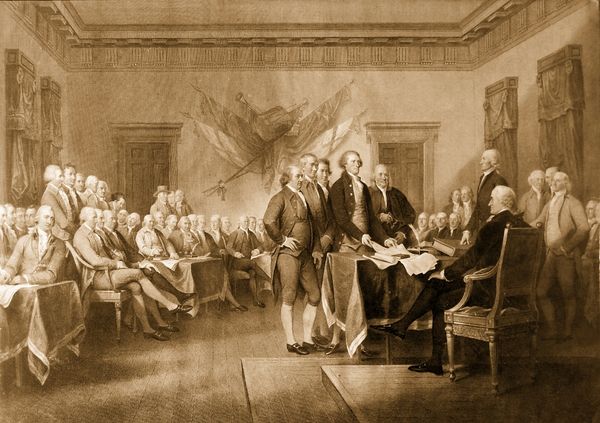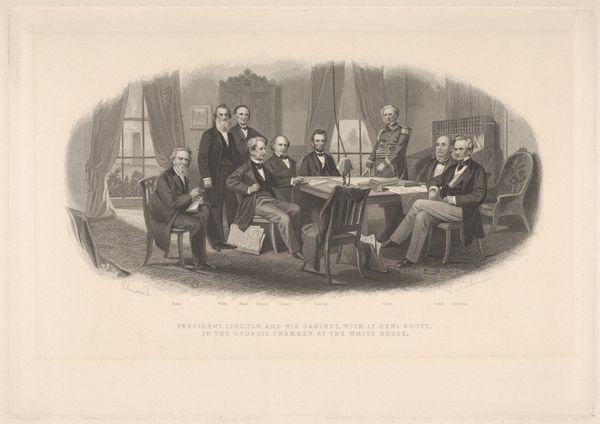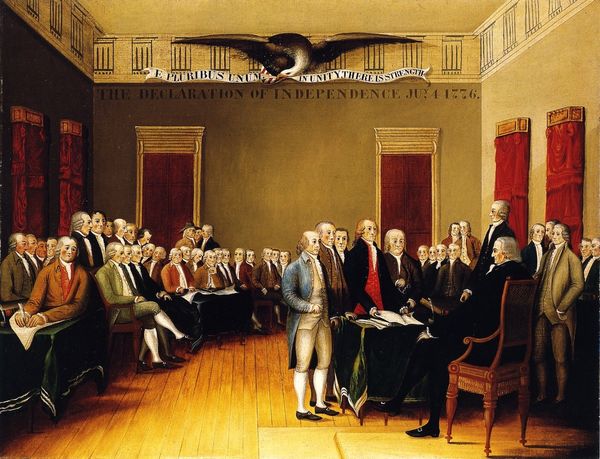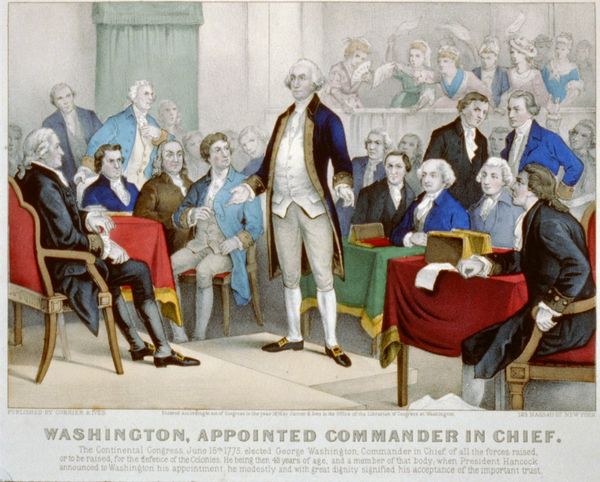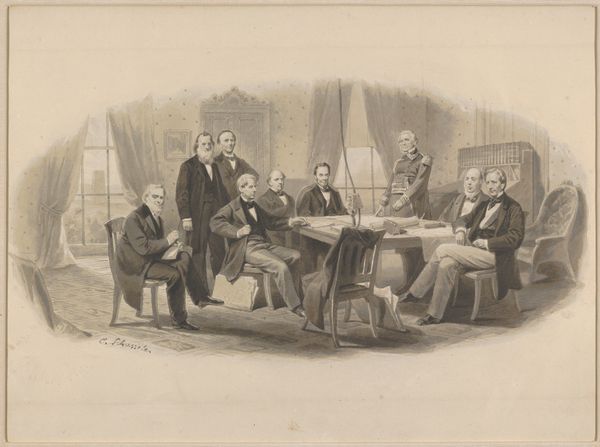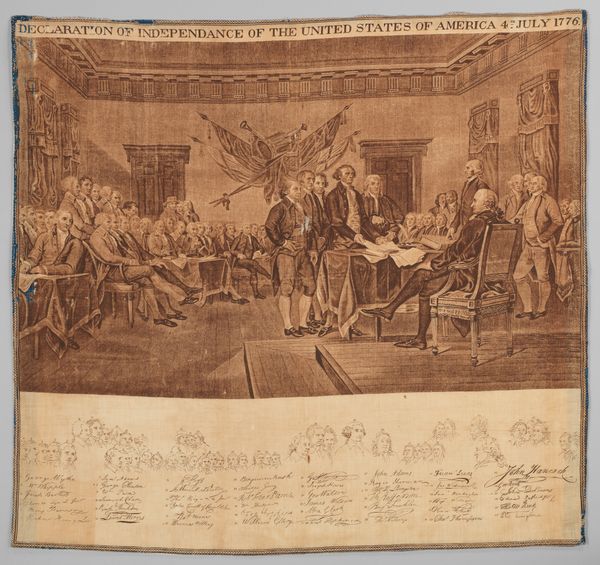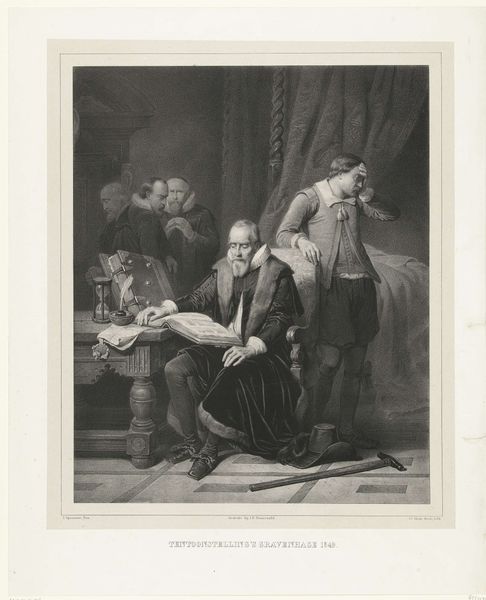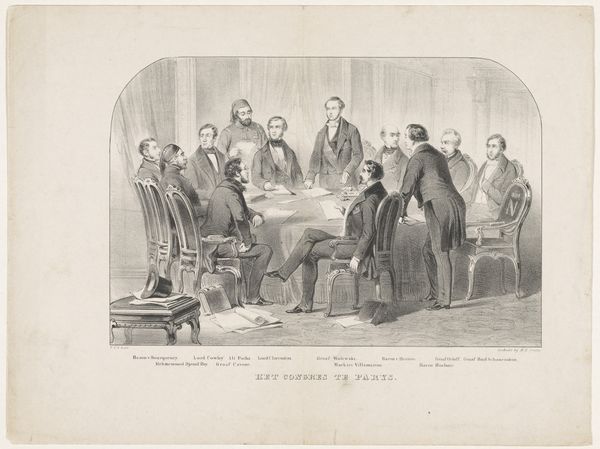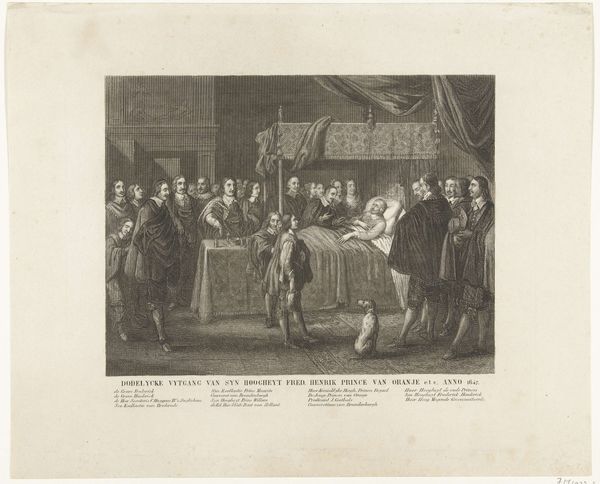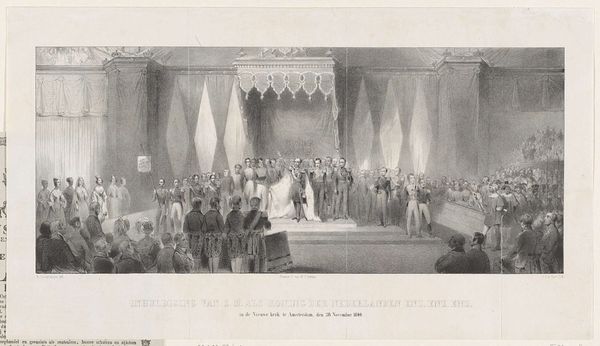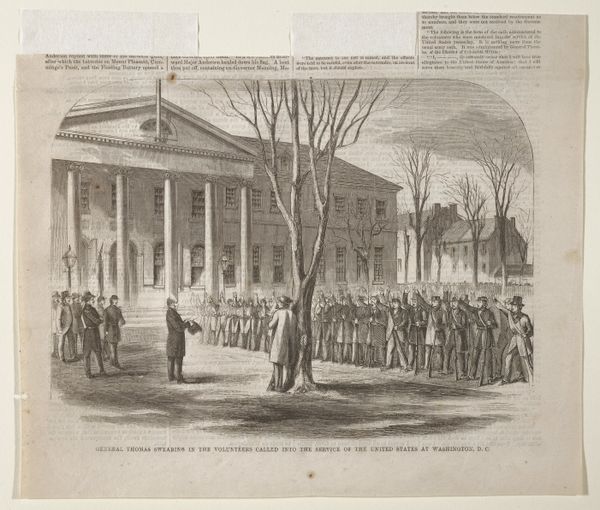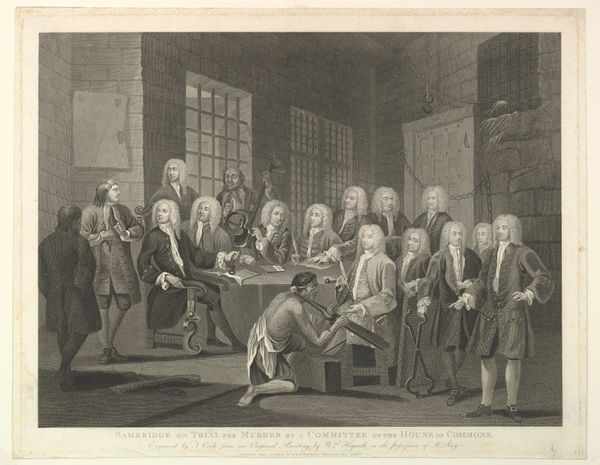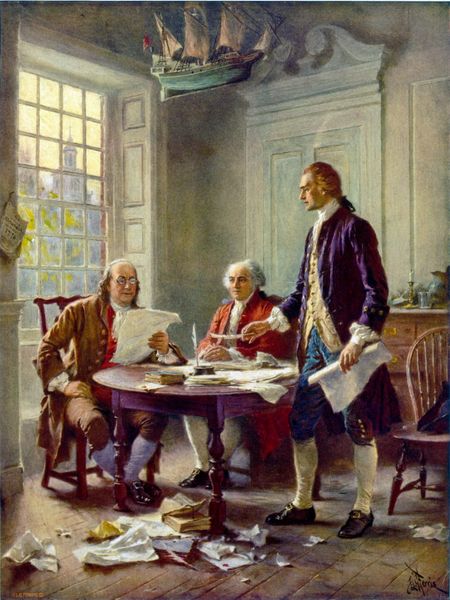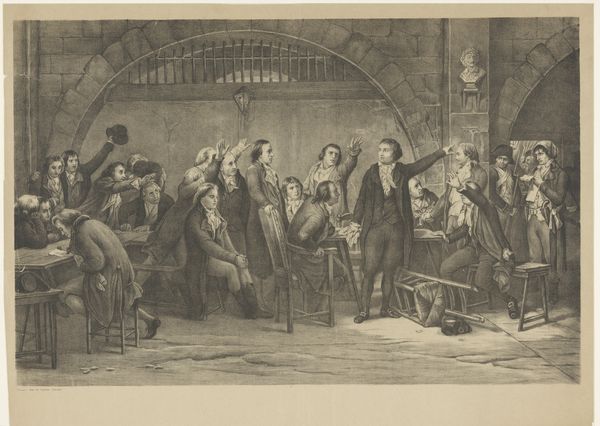
The Declaration of Independence, July 4, 1776 1823
0:00
0:00
drawing, print
#
portrait
#
drawing
#
neoclacissism
#
narrative-art
# print
#
history-painting
#
academic-art
#
realism
Dimensions: image: 20 3/16 x 30 3/16 in. (51.3 x 76.7 cm) sheet: 23 7/8 x 32 in. (60.6 x 81.3 cm)
Copyright: Public Domain
Curator: The scene is rather striking; an assembly of figures arranged with almost architectural precision. There’s a somber weight to the image, a feeling of momentous occasion, but also, dare I say, a touch of stagecraft? Editor: You've got a keen eye. What we're looking at is Asher Brown Durand's print of "The Declaration of Independence, July 4, 1776," from 1823. It depicts, of course, the presentation of this foundational document to the Continental Congress. Durand, as you can see, worked from an earlier painting by John Trumbull. As a print, it becomes incredibly interesting in terms of how images get disseminated. Curator: Absolutely, let's think about the context of reproductive engraving and prints. How does this circulate the notion of nationhood, especially almost 50 years after the event depicted? It is worth asking: who had access to these prints? What meanings were being constructed and reinforced through this widespread visual representation of national origins? Editor: A vital point. Looking closely, the labor is fascinating here, in particular. Consider the choices around figure placement. Most striking to me, frankly, are the implied racial politics here: it's a very concentrated visual field of white landowners at this foundational moment. Think of the social hierarchies, the access to materials, education and patronage that would allow a person to create or access this artwork. What's also revealing is what *isn't* shown here. The messy debates, the compromises... Curator: Precisely. Consider this artwork as a highly crafted piece of propaganda for this moment of American independence; it reinforces a specific narrative through carefully managed aesthetics and the industrial reproduction of this scene. One can imagine the effect on emerging citizens of a fledgling nation to witness the gravity of its own creation like this. The almost architectural quality to the group of figures feels very carefully constructed. Editor: Agreed, it’s a powerful piece, deeply embedded in historical, political, and material processes of nation-building and visual culture. These kinds of history paintings had great symbolic meaning and were part of the broader visual and rhetorical toolset. Curator: In seeing all the iterations from paint to print we come to a different understanding about the power of the American founding myth. Editor: A vital re-framing. It shifts our perspective.
Comments
No comments
Be the first to comment and join the conversation on the ultimate creative platform.
